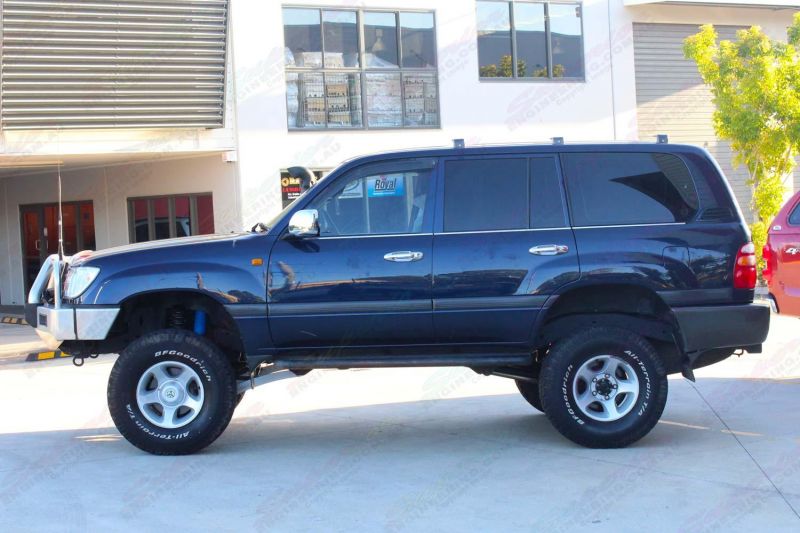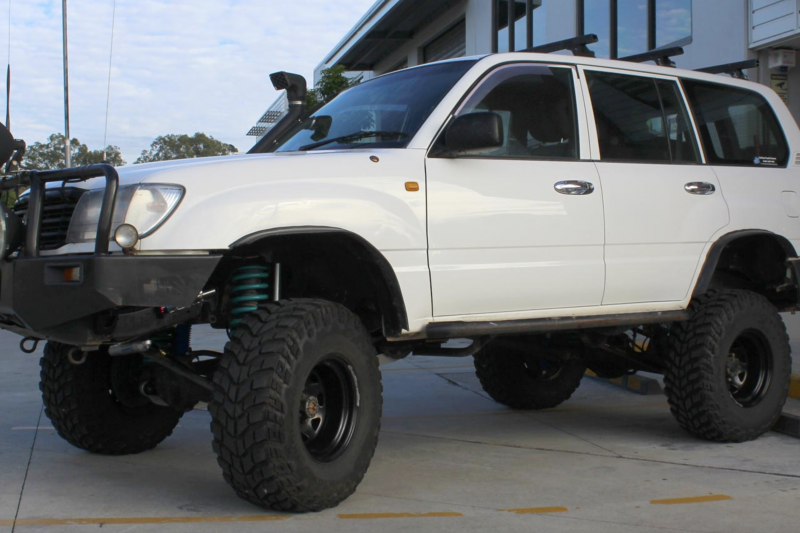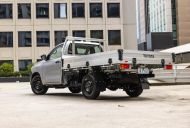It seems like anyone who owns a vehicle with four-wheel drive these days insists on fitting it with a lift kit and wheels.
Some brands are even offering lift kits as an accessory item for brand new utes and SUVs to take the guesswork out of having someone else modify the vehicle.
- You are legally allowed to lift your vehicle – to a degree
- The size of the lift you desire it could require certification
- Raising your ride height can allow better off-road ability, but may feel very different to drive
Factory-backed lift kits mean that you don’t need to read the fineprint in your warranty documentation, because otherwise, you could find yourself having your warranty cover voided if you make changes to the car’s suspension through a business other than the manufacturer’s official channels.
That won’t matter to you if you have an older vehicle that you’re planning to lift, though, but there are still plenty of rules and regulations around what you can and can’t do when it comes to lifting your vehicle.
First, what does it mean to lift your 4×4, ute, car or SUV? Essentially, you’re trying to raise the body of the car to allow it more ground clearance and therefore more potential off-road-ability.
The Australian Government department of infrastructure, transport and vehicles publishes The National Code of Practice for Light Vehicle Construction and Modification (NCOP), which incorporates sets of live, changeable guidelines for vehicle modifications.
According to the department’s site: “The National Code of Practice for Light Vehicle Construction and Modification (VSB 14) has been prepared by members of the Australian Motor Vehicle Certification Board Working Party in consultation with industry, user groups, government agencies and individuals with an interest in modifying light vehicles and/or building individually constructed light vehicles (ICVs).”
Under VSB 14, vehicle lift modifications that increase the height of the vehicle by more than 50mm will require certification: “VSB 14 requires that any change in ride height above 50mm must be certified regardless how it is achieved.”
Further, the following “significant modifications” require assessment:
- A change in the vehicle’s suspension:
- i. that increases the vehicle’s ride height between 50mm and 125mm;
- or ii. of up to 125mm that combined with an increase in the diameter of the wheel and tyre combination of up to 50mm increases the vehicle’s ride height between 75mm and 150mm.
- i. that increases the vehicle’s ride height between 50mm and 125mm;
- Installation of a variable ride height system
- Any increase in the ride height using a body lift
- A change in the diameter of the wheel and tyre combination in excess of +/- 7% of the largest size specified by the vehicle manufacturer
You might opt for a body lift, which for ladder-chassis, body-on-frame vehicles sees the addition of a set of spacers between the chassis and the body of the car, in turn raising the body of the vehicle to whatever degree the spacing blocks dictate.
These are typically simpler and cheaper to buy than other lift options, but do not offer an adjustable height change, unlike many suspension lift options.
Further, despite the quoted “significant modifications” list above stating that body lifts require certification, VSB 14 Section LS – Suspension and Steering states that “raising the vehicle with a body lift kit provided the original vehicle height is not increased by more than 50mm (refer to sub-section 4.11 for conditions and limitations)” does not require certification.
Should you choose a suspension lift – whereby you switch out the standard OEM suspension with more heavy duty shocks and springs with longer travel and therefore greater ground clearance – you will potentially be able to adjust the height change to suit the stance you want to get.
And further, remember that if you put larger, more aggressive all-terrain tyres or mud tyres on, they will lift the height of the vehicle as well. So you need to the the calculations if you don’t want to go through the certification process.
As such you can only do a certain amount of lifting before you might need certification for the work, otherwise you may be defected for driving an unroadworthy vehicle.
Not intended as legal advice. Check with the relevant roads authority in your state or territory.












